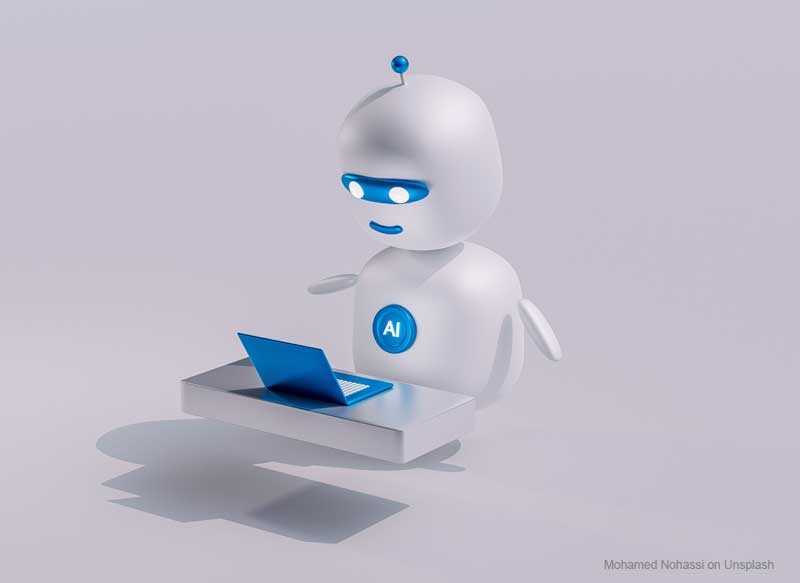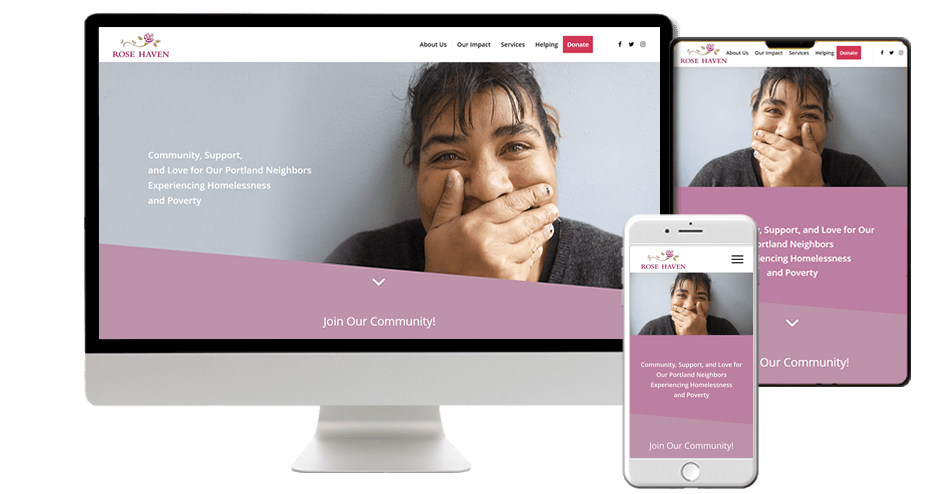AI for Nonprofit Website Design
Why You Should Not Depend on It
Outline
- Introduction
- Understanding the Role of AI in Website Design
- Limitations of AI in Website Design
- Importance of Human Touch in Website Design
- The Impact of AI on the Website Design Industry
- Common Misconceptions about AI in Website Design
- Alternatives to AI in Website Design
- Conclusion
- FAQs
As a veteran nonprofit professional and the operator of Dot Org Web Works, I fully understand the importance of producing a visually-impressive and well-branded nonprofit website. I hope that this article will be helpful to you and your organization’s mission.
Website design plays a critical role in establishing a strong online presence for businesses, nonprofit organizations, and individuals alike. In recent years, artificial intelligence (AI) has gained significant attention as a powerful tool in various entities. However, when it comes to AI for website design, there are compelling reasons why you should be wary of it. This article explores the limitations of AI in website design and emphasizes the importance of the human touch in creating engaging and successful websites.
Introduction
In the era of AI-driven advancements, it is tempting to believe that AI can handle every aspect of our lives, including website design. While AI certainly offers valuable capabilities, it falls short in several crucial areas that are fundamental to effective website design. Let’s delve into the limitations of AI in website design and discover why human involvement is indispensable.
Understanding the Role of AI for Website Design
AI in website design primarily revolves around automated processes and algorithms that aim to streamline the design workflow. It can assist in generating layouts, choosing color palettes, and even suggesting content placements. AI-powered design tools utilize pre-existing templates and patterns to automate certain design elements. There is little originality in AI design.
Limitations of AI in Website Design
Lack of Creativity and Originality
One of the main limitations of AI in website design is its inability to exhibit true creativity and originality. This is even more pronounced when the product or subject matter pertains to empathy and human connections. While AI can analyze existing design trends and generate superficially appealing layouts, it lacks the capacity for genuine innovation. AI is limited to what it has been trained on, and it often fails to capture the essence of a unique brand identity. In other words, AI lacks soul.
Insufficient Understanding of User Experience
Effective website design goes beyond aesthetics; it focuses on delivering an exceptional user experience (UX). AI may struggle to comprehend the intricate nuances of human behavior and emotions that shape user experience. Design decisions based solely on AI algorithms may overlook crucial aspects, leading to a subpar user journey.
Limited Customization Options
AI-powered design tools may offer a range of pre-defined templates and styles, but they often lack the flexibility required to meet specific organizational needs. Customization is crucial for creating a website that aligns with a brand’s unique personality and goals. AI falls short in providing the level of customization that human designers can deliver.
Importance of Human Touch in Website Design
Uniqueness and Brand Identity
Human designers bring a level of creativity and originality that AI cannot match. They understand the importance of creating a distinct brand identity through visual elements, typography, and color schemes. By infusing their expertise and imagination, human designers can tailor the design to reflect the essence of a brand, setting it apart from competitors.
User-Centric Approach
Understanding the target audience and designing with the user in mind is a crucial aspect of website design. Human designers have the ability to empathize with users, conduct user research, and incorporate user feedback into the design process. They can create intuitive navigation, optimize usability, and ensure a seamless user experience that AI algorithms alone cannot achieve.
Creative Problem-Solving
Website design often involves solving complex problems and finding innovative solutions. This is especially true with nonprofit organization websites. Human designers possess critical thinking skills and a deep understanding of design principles and priorities. They can think outside the box, adapt to unique challenges, and come up with creative design solutions that cater to specific requirements. AI, on the other hand, relies on predefined patterns and lacks the ability to tackle novel design problems effectively. Like any advanced tool, it needs to be used judiciously.
The Impact of AI on the Website Design Industry
AI has undoubtedly made an impact on the website design industry by streamlining certain design processes and increasing efficiency. It has provided designers with valuable tools and resources that can enhance their workflow. However, it is important to recognize that AI is not a substitute for human designers. It should be viewed as a complementary tool that can assist in specific areas but cannot replace the human touch and expertise.
Common Misconceptions about AI in Website Design
AI as a Substitute for Human Designers
One common misconception is that AI can replace human designers entirely. While AI can automate certain design tasks, it cannot replicate the unique perspective and creativity that human designers bring to the table. Human designers possess the ability to understand and interpret complex design briefs, collaborate with clients, and translate ideas into visually compelling websites.
AI as a Quick Fix for Design Problems
Another misconception is that AI can provide instant design solutions without the need for human intervention. While AI can generate design options based on predefined parameters, it lacks the judgment and intuition required to make informed design decisions. Human designers consider various factors, such as brand identity, target audience, and usability, to create designs that resonate with users.
Alternatives to AI in Website Design
While AI can be a helpful tool in website design, there are alternative approaches that prioritize the human element. These approaches leverage the expertise and creativity of human designers to deliver exceptional results.
Collaborative Design Approach
Collaboration between AI and human designers can yield good outcomes. AI can assist in generating potential design options, providing data-driven insights, and automating repetitive tasks. Human designers can then refine and customize these options, ensuring they align with the brand’s vision and objectives.
Leveraging Professional Design Expertise
Engaging professional designers who possess a deep understanding of design principles and trends can significantly enhance the quality of website design. These experts have honed their skills through years of experience and can apply their expertise to create visually appealing and user-friendly websites.
User Testing and Feedback
Incorporating user testing and feedback throughout the design process is essential for creating successful websites. Human designers can conduct usability testing, gather feedback from users, and make iterative improvements based on the insights gained. This user-centric approach ensures that the website meets the needs and expectations of the target audience.
Conclusion
While AI has its benefits in website design, it is crucial to recognize its limitations. The human touch, creativity, problem-solving abilities, and user-centric approach that human designers bring to the table are indispensable. By combining the strengths of AI with human expertise, businesses can achieve remarkable website designs that leave a lasting impression on their users.
Full disclosure. This article was generated with the help of chat.openai.com. It does, however, reflect the views of the author (who has 23 years of experience developing nonprofit websites).
FAQ on AI for Website Design
- Can AI completely replace human designers in website design?
No, AI cannot replace human designers entirely. AI can assist in certain design tasks, but it lacks the creativity, problem-solving skills, and human touch that human designers provide.
- Does AI guarantee a better user experience for websites?
No, AI alone cannot guarantee a better user experience. Design decisions based solely on AI algorithms may overlook crucial aspects of user experience. Human designers, with their understanding of human behavior and emotions, can create user-centric designs that cater to the specific needs and preferences of the target audience.
- Can AI create unique and customized designs?
AI-powered design tools may offer templates and styles, but they often lack the level of customization required to create unique designs that reflect a brand’s identity. Human designers excel in tailoring designs to match a brand’s personality and goals.
- How can human designers add value to the website design process?
Human designers bring creativity, originality, critical thinking skills, and the ability to solve complex design problems. They can empathize with users, conduct user research, and incorporate feedback to create intuitive and engaging website experiences.
- Are there any risks associated with relying solely on AI for website design?
Yes. Relying solely on AI for website design can lead to generic designs that lack uniqueness and fail to resonate with the target audience. It may also overlook critical design elements and user experience considerations, resulting in subpar websites.
- How can organizations leverage both AI and human designers effectively?
Organizations (profit and nonprofit enterprises) can leverage AI as a complementary tool in the website design process. AI can assist in generating design options, automating repetitive tasks, and providing data-driven insights. Human designers can then refine and customize these options, ensuring they align with the brand’s vision and deliver an exceptional user experience.
In conclusion, while AI offers advantages in certain aspects of website design, it cannot replace the creativity, problem-solving abilities, and human touch that human designers bring to the table. By embracing a collaborative approach and leveraging the expertise of human designers, businesses can create unique, user-centric websites that leave a lasting impact. So, when it comes to website design, remember the invaluable role of human designers alongside AI-powered tools.






